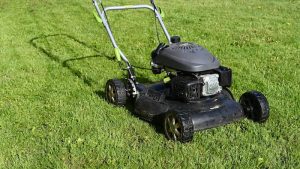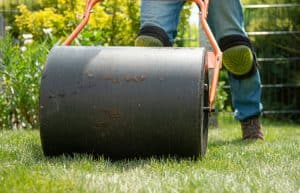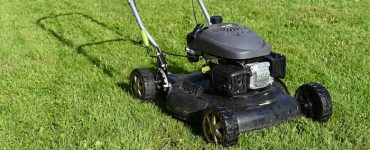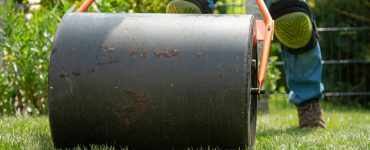When you overseed your lawn, you probably assumed that you could walk on it right away. After all, the seed is just a tiny plant! But might you be waiting too long? The answer is complicated, but in general, most experts say that you should stay off your newly seeded lawn before walking on it. This article will explain more.
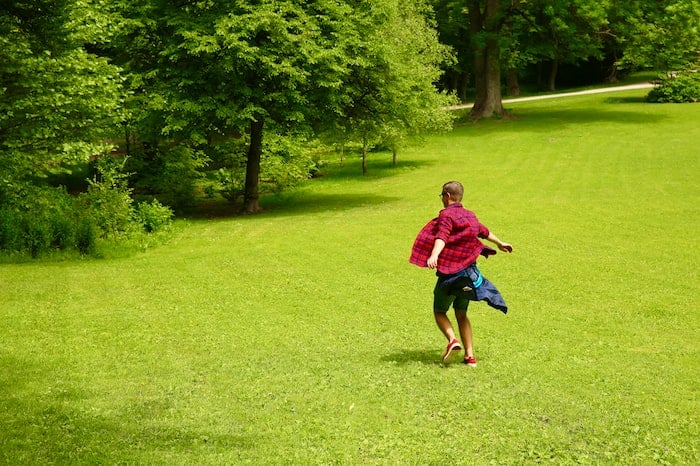
Can You Walk On Newly Seeded Lawn?
This is a question that many homeowners ask themselves before they even plant their new sod. The answer is yes, but with caution. Newly seeded lawn can be very soft and easily broken, so it’s important to take care when walking on it.
Try to avoid stepping on the middle of the sod or any of the smaller divots. Instead, walk on the edges where the grass has been mowed closer together. If you do happen to step on a sod spike, don’t panic – just try to gently pull it out before continuing your walk.
Benefits of Walking on Newly Seeded Lawn
If you’re like most homeowners, you love your new lawn! But did you know that walking on it (even just a little bit) can have some pretty great benefits? Here are three of them:
Help to Aerate the Soil
Walking on Newly seeded lawns can help to aerate the soil, which in turn helps to improve the quality of the soil and promote plant growth. It can also help break up the surface layer of soil, which will allow air and water to reach the deeper portions of the soil. This in turn will help to improve plant growth and reduce susceptibility to pests and diseases.
Help to Preserve the Turfgrass and Discourage Weed Growth
Walking breaks up the soil, which helps keep weed seeds from germinating and spreading. Additionally, this activity help encourages the growth of beneficial microorganisms, which break down organic material in the soil and help improve turf health.
Helps Compress the Loose Soil
Walking on newly seeded lawn can helps compress the loose soil. Loose soil is a common problem after mowing, and it can lead to weak plants and a poor lawn. Walking on the freshly seeded lawn will help compact the soil, which will reduce the chance of problems down the road.
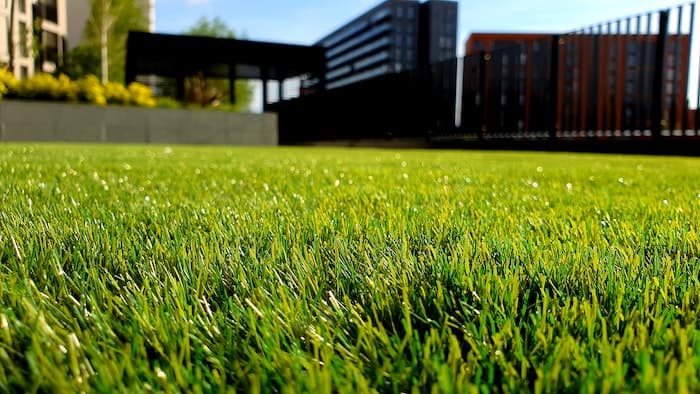
Drawbacks of Walking on Newly Seed Lawn
If you’re looking to avoid the hassle of mowing your lawn, walking is an easy and low-maintenance option. However, there are a few drawbacks to consider before making the switch.
New Grass Is Thin and Fragile
Walking on freshly seeded lawns can easily damage the new grass, causing it to be thin and fragile. The thinness and fragility of the grass makes it more susceptible to wear and tear, which will ultimately lead to less overall growth. Additionally, the new grass is unable to withstand heavy foot traffic or wind gusts, which can both cause physical damage as well as reduce its viability.
Cause Divets in The Soil
When people walk on newly seeded lawns, they create small divots in the soil. This can cause the surface of the soil to be uneven and make it difficult for water and nutrients to reach the lawn’s roots. In addition, this type of walking also disturbs the grass’s root system, which can lead to a decrease in plant growth and a loss of turf.
Cause Lawn to Look Patchy
When you walk on a newly seeded lawn, the seeds are still germinating and can cause the lawn to look patchy. The germination process causes the grass to grow in clumps instead of spreading out evenly. This will create lines where the grass is thicker and other areas that are thinner.
How Long Should You Wait to Walk on Newly Seeded Lawn?
When you first plant a lawn, it takes about 1-2 weeks for the blades of grass to grow and form a solid foundation. During this time, avoid walking on the lawn as much as possible to allow the new grass to establish itself.
After approximately 6-8 weeks, you can begin to walk on the lawn. However, continue to be cautious because overuse of the lawn can cause it to become thin and weak.
Factors that Affect the Newly Seeded Lawn Growth Rate
In order for a newly seeded lawn to grow rapidly and fill in properly, there are a few key factors that must be taken into account.
Soil Types
Lawns are one of the most popular landscaping plants in the United States. A properly prepared lawn will provide years of enjoyment for owners. Proper soil preparation is essential for newly seeded lawns because it affects how fast the lawn grows.
The type of soil that a lawn is planted in can have a significant impact on how fast the grass grows. Sandy soils take longer to warm up than clay soils, and this can result in taller and slower growing grass. To ensure that your newly seeded lawn grows quickly and evenly, make sure to choose a soil mix that is specifically formulated for new turf growth.
Proper Mowing
Proper lawn mowing is one of the most important steps in maintaining a healthy and attractive lawn. Mowing at the proper height and frequency will help to prevent grass overgrowth, promote a healthy root system, remove accumulated dead vegetation, and reduce the number of weeds that can choke out plants. Additionally, properly maintained turf will recover more quickly from wear and tear caused by foot traffic or weather conditions.
Weed Control
When a lawn is newly seeded, there is a greater risk of having weeds compete for sunlight and water. Weed control can help to reduce the growth of these weeds and allow the newly seeded lawn to grow at a more normal rate.
Climates
Lawns are often planted in the fall, in order to have the best growth rate possible. However, different climates will have a significant effect on how quickly the lawn grows. In hot, humid climates, the new grass will grow much more quickly than in cold climates where there is less humidity. Additionally, newly seeded lawns in direct sunlight will grow faster than those that are shaded.
Conclusion
In conclusion, we would say that if you have an overseeded Lawn, it is possible to walk on it, but it is not recommended. Remember to maintain the turf by properly watering and fertilizing it to keep it healthy and looking great!


